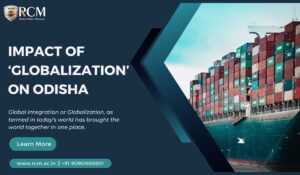Written By, Dr. Hemant K. Panda || Professor and Principal
Abstract
Many researches addressed the importance of market segmentation. It is proved that market segments could be developed based on the perceived differences in the product attributes evaluation. However, what makes the consumers perceive the attributes differently is rarely understood. The current study aims to relate the perceived differences in attribute evaluation because of the problem recognition styles associated with the consumer’s purchase decision process.
The perceptual maps produced by the Multi-dimensional Scaling procedure suggest that the perceived differences in attribute evaluations could be attributed to the way a consumer recognizes the need/problem. The attributes perceived vary between the problem recognition styles associated with the purchase process. Thus, marketers could benefit by creating segments based on the problem recognition styles of the consumers.
Index Terms – Problem recognition styles, product attributes, segmentation, Multidimensional scaling, and Toilet soaps.
INTRODUCTION
Many studies suggest a diverse set of methods and tools to segment the markets. The levels of segmentation needed to achieve meaningful target marketing often depend on factors like the competitive landscape, the velocity of the market, and product line breadth. Segmentation is designed to make more efficient use of marketing resources by tailoring messages, offers, and customer relationship management initiatives to customers who will be most responsive (Wyner, 2004).
A unique approach suggested by Green (2000) is based on the perceived differences in the attributes. If the product attributes are perceived differently, then there is a scope for developing market segments based on those differences. Several researches have addressed how consumers form preferences for various product-related attributes. The attribute preferences are developed by processing advertising messages (Smith 1991), high-motivation and low-motivation subjects (Maheswaran, Mackie, and Chaiken 1992), advertisement context (Yi 1993), what a person knows about company-corporate associations (Brown and Dacin 1997), and country of origin effects (Hong and Wyer 1990).
Moreover, attribute evaluation is moderated by the ability of consumers to generate reasons for and against choice alternatives (Chernev, 2001) and complex usage situations (Brucks, 1985). Sujan, Bettman, and Baumgartner (1993) found that when advertisements encourage the retrieval of autobiographical memories, there is a higher level of felt effect and reduced processing of product attributes.
John Dewey first introduced the five-stage purchase decision process. It has been widely accepted and is still the central pillar of consumer behavior, of course, to a very limited extent, in spite of being the first stage of the decision process significance of the problem recognition styles addressed by the earlier studies (Bruner, 1986; Bruner and Pomazal, 1988; Asugman and Cote, 1993; Workman and Studak, 2006). The current study focuses on whether Product attributes are perceived differently by consumer groups based on the problem recognition styles, and, if so, whether an approach to segment the market could be developed based on the differences.
REVIEW OF EARLIER STUDIES
Market segmentation seeks to gain some competitive advantage by treating consumer groups differently. The advantages differ depending on the approach but include price differentiation, superior targeting, customer loyalty or retention, and strategic planning. Increasingly, marketers are employing cluster-based segmentation in the design and implementation of business strategy.
Smith (1995) found that segmentation is based upon developments on the demand side of the market and represents a rational and more precise adjustment of product and marketing effort to consumer or user requirements. Corner (2002) observed that the starting point for a company’s Customer Relationship strategy is segmentation. The optimal segmentation scheme comes from a process that is about 50 percent science and 50 percent art and intuition.
However, retaining the true number of segments is crucial because many managerial decisions on segmentation, targeting, positioning, and the marketing mix are based on it (Andrews and Currim, 2004). Schultz (2002) attributed the failure of segmentation to the static nature; once customers or prospects have been assigned to a segment, marketers think the task is done. However, there is a need for marketers to monitor the behavior of consumers in segments continuously.
A variety of schemes for market segmentation have been suggested in the literature that identify distinct consumer groups with homogeneous preferences or choice behaviors. Clustering methods are employed extensively in segmentations based on psychographics, benefits seeking, or conjoint part worths data (Krieger and Green, 1996). Allenby and Ginter (1995) identified that the “extreme respondents” have important implications for product design and market segmentation decisions.
A classification of a sample of consumers into lifestyle segments is obtained by Wagner, Kamakura, and Wedel (1995) using a latent-class model. Wyner (2002) suggested (i) channel-based segmentation, (ii) line of business-based segmentation, and (iii) Customer needs and benefits-based segments.
In the study, as far as context is concerned, very few researchers addressed the dynamics in it. Chandra and Ryans (2002) viewed that obtaining a strong foothold in the Indian market requires effective segmentation. Further, they added the opinion of retired Procter & Gamble executive Helmut Meixner; “Effective segmentation is critical to understanding and finding ways to market to the segment that the particular product appeals to..”
Thus, the current study aims to develop perceptual maps for the product attributes of the two consumer’s problem recognition styles using a multidimensional- scaling procedure. If the attributes are perceived differently by the two consumer problem recognition styles, (perceptual maps with differing positions for product attributes), then, based on the perceived differences, one can create market/consumer segments.
METHODOLOGY
This section summarizes a profile of the sample collected and the instruments used to collect the responses.
Data and Profile
The data was collected from a field survey in Kanchipuram district, adjacent to Chennai city, the state capital of Tamil Nadu, India. With the help of a structured interview schedule, 686 respondents were contacted. The respondents were asked to report about their opinion on various product attributes related to the toilet soap brands and how they have recognized the need for the product – toilet soaps.
Out of the 686 respondents, 372 (54.2%) respondents were male and 314 (45.8%) were female. Mean monthly income of the family was INR 9221 (a = INR 7342). Mean family size of the respondents was 4.6 members per family (a = 1.4). As far as usage of the brand is concerned, 56.6 percent of the respondents were popular segment brand users; 213 (31%) were premium segment brands users and the rest reported that they were using economy segment brands. The current brands were used for fairly longer years 5.59 years (a = 5.29 years) by the respondents.
Measures
The scale for the consumers’ problem recognition styles consists of eight items, which are Likert type in nature, measured on a seven-point scale, developed by Bruner (1986) with internal consistency of 0.90. The scale divides the consumers into actual state (AS Type) consumers and desired state (DS Type) consumers based on the mean score of aggregate of the eight items. Respondents with a score of 3.5 or less for the average of the 8 items were categorized as ‘AS Type’ and the rest of them were classified as ‘DS Type’. This classification scheme placed 269 respondents as ‘AS type’ and the rest (417) as ‘DS type’.
The scale developed by Alpert and Kamins (1995) for multi- attribute attitude for measuring consumer memory and attitude towards pioneer and follower was adopted for measuring the product attributes related evaluations. The 16 bipolar adjective pairs, measured on a scale of -3 to +3, had reported Cronbach’s alpha coefficient level of 0.78. The scale is having the reliability coefficient (Cronbach’s alpha) value of 0.796.
ANALYSIS AND RESULTS
Multidimensional scaling attempts to find the structure in a set of distance measures between objects or cases. Given a set of objects, the goal of multidimensional scaling is to find a representation of the objects in a low-dimensional space. This solution is found by using the proximities between the objects. The purpose of the low-dimensional space is to uncover relationships between the objects. By restricting the solution to a linear combination of independent variables, one may be able to interpret the dimensions of the solution in terms of these variables (SPSS).
The respondents were divided into two groups based on their scores on the problem recognition styles. Multidimensional scaling algorithm was applied to the 16 product attributes evaluations of the respondents and results for each group were obtained separately. This study uses the ALSCAL procedure in SPSS 12 (Alternating Least-Squares Algorithm) to perform Multi-Dimensional Scaling (MDS). Iteration history for the two
Table 1. Iteration history for the 2-dimensional solutions -Actual State Consumers (In squared distances)
| Iteration | S-stress | Improvement |
| 1 | 0.22961 | |
| 2 | 0.1734 | 0.05728 |
| 3 | 0.16448 | 0.00786 |
| 4 | 0.16256 | 0.00192 |
| 5 | 0.16226 | 0.00031 |
Young’s S-stress formula 1 is used. Iterations stopped because S-stress improvement is less than .001000

Figure 1. Derived Stimulus Configuration dimensional solutions (in squared distances) has been obtained. For the actual state consumers, the results are summarised below.
The RSQ value for fitted data is 0.92995. RSQ values are the proportion of variance of the scaled data
(disparities) in the partition (row, matrix, or entire data) which is accounted for by their corresponding distances. It could also be interpreted as how well the MDS algorithm explains the variance in the data; from this, it is evident that nearly 92 percent of variance in the data has been accounted by the procedure. By using the Kruskal’s stress formula 1 (Kruskal, 1964), stress values are computed, which is 0.1838, a fair fit for the data.
The results related to the desired state consumers are summarized below. The RSQ value for fitted data is 0.88957 and the stress value is 0.18711.
For the results pertaining to actual state consumers as well as for the desired state consumers, the MDS procedure accounted fair amount of variances in the data. The way the product attributes perceived in relation with others differs significantly for the actual state consumers and desired state consumers. Most of the attributes clustered together and formed a bigger group for the actual state consumers. There are various groups of variables evident for desired state consumers.
DISCUSSION
The two perceptual maps produced by the MDS procedure suggest the perceptual differences in product attributes evaluations between the consumer groups based on problem recognition styles. For actual state consumers, most of the product attributes (13 attributes out of 16) are
Table 2. Actual State Consumers: Stimulus Coordinates
| SI No. | Stimulus Name | Stimulus Name displayed in the M DS (Map) | Stimulus Coordinates Dimension | ||
| 1 | 2 | ||||
| 1 | High quality Poor quality | – | cu_qu | 0.4493 | – 0.1587 |
| 2 | Useless – Useful | cu_use | 0.6448 | 0.3658 | |
| 3 | Bad – Good | cu_good | 0.5520 | – 0.0404 | |
| 4 | Dangerous – Safe | cu_dange | 0.7891 | – 0.0287 | |
| 5 | Expensive Inexpensive | – | cu_expen | – 2.3180 | 2.0074 |
| 6 | Not a status symbol – Status symbol | cu_stsym | – 1.6165 | – 1.4825 | |
| 7 | Unreliable Reliable | – | cu_relia | 0.7282 | 0.2092 |
| 8 | Inferior Superior | – | cu_infer | 0.1253 | 0.3269 |
| 9 | Untrustworthy – Trustworthy | cu_trust | 0.4846 | – 0.4963 |
| 10 | Not very distinctive – Very distinctive | cu_dis | 0.1107 | – 1.0660 |
| 11 | Unimportant – Important | cu_imp | 1.0364 | 0.1132 |
| 12 | Conforming – Unconforming | cu_confr | – 3.1976 | – 0.6038 |
| 13 | Low tech – High tech | cu_tech | 0.8438 | 0.4424 |
| 14 | Complex – Simple | cu_simpl | 0.4067 | 0.3990 |
| 15 | Dull – Exciting | cu_dull | 0.3055 | 0.4070 |
| 16 | Unsophisticated – Sophisticated | cu_sophi | 0.6558 | – 0.3946 |
closely clustered with each other. Three of the product attributes, viz., status sYnnbol, expensiveness and conforming perceived distinctly from other attributes. This consumer group used to arrive at the solution based on the Seed recognized and to derive the pre- Purchase satisfaction and consolidate the decision as the best course of action, related to most of the attributes with each other.
On the other hand, four distinct clusters of product attributes are
Table 3. Iteration history for the 2-dimensional solutions -Desired State Consumers (In squared distances)
| Iteration | S-stress | Improvement |
| 1 | 0.21852 | |
| 2 | 0.17420 | 0.04432 |
| 3 | 0.17300 | 0.00121 |
| 4 | 0.17290 | 0.00010 |
Young’s S-stress formula 1 is used. Iterations stopped because -stress improvement is less than 0 .001000

Figure-2: Derived Stimulus Configuration evident in the perceptual map for the desired state consumers. Usefulness, goodness, simplicity, sophistication, technology, and quality attributes of the product have been perceived together and form a cluster. Attributes like dullness, reliability, safety,
importance, trust, and superiority form the second cluster. Toilet soaps as status symbol and expensiveness were found close to each other. Finally, distinctiveness and conforming form the fourth cluster. By highlighting the particular set of attributes, the marketers could gain more favourable attribute evaluation from the consumers and eventually deliver higher levels of satisfaction to the target market.
The clustering effects of attributes provide evidence that the consumer groups evaluate the attributes distinctly. The need for the product, importance/relevance of product attributes and evaluation of attributes suggest that the marketers could be benefited by understanding the problem recognition styles. Problem recognition styles have been shown to be related with information search efforts (Bruner, 1986). The current study provides evidence that in product evaluation too, there is a significant role by the problem recognition styles. flow the product attributes are perceived with each other is an important input for new product development decisions, and communication mix strategies.
The marketers should also understand that there are certain product categories, where the consumers exhibit particular styles of problem recognition. For example, need for compact disc player (CD player) Is often a change in the desired state of consumers who get bored or need a change in the existing audio system; with categories like salt and rice, while the problem is not often recognized. The consumers simply run out of stock and initiate the purchase decisions. Toilet soaps are particularly high involvement items for many consumers; often they may not recognize a problem for the category. Once the brand choice is made, the repeat purchase situations often could be compared with that of an actual state type; when the consumer is running out of stock, often they decide the purchases. However, the promotional measures and influence of advertisements are still recognized as effective tools to affect the consumer choices by the marketers. Thus, understanding the size of the market segment based on the problem recognition style would provide significant insights about the consumer behaviour.
CONCLUSION
Segmentation has a long history in marketing. It starts with the notion that
Table-4: Desired State Consumers: Stimulus Coordinates
| SI No. | Stimulus Name | Stimulus Name displayed in the M DS (Map) | Stimulus Coordinates Dimension | ||
| 1 | 2 | ||||
| 1 | High quality – Poor quality | cu_qu | 0.9340 | – 0.5798 | |
| 2 | Useless – Useful | cu_use | 0.8433 | – 0.4242 | |
| 3 | Bad – Good | cu_good | 0.8973 | – 0.5508 | |
| 4 | Dangerous – Safe | cu_dange | – 1.3547 | – 0.3895 | |
| 5 | Expensive Inexpensive | – | cu_expen | 1.5912 | 1.3532 |
| 6 | Not a status symbol – Status symbol | cu_stsym | 1.6551 | 1.1185 | |
| 7 | Unreliable – Reliable | cu_relia | – 1.0440 | – 0.5726 | |
| 8 | Inferior – Superior | cu_infer | – 0.6021 | – 0.3391 | |
| 9 | Untrustworthy Trustworthy | – | cu_trust | – 1.0770 | – 0.3421 |
| 10 | Not very distinctive – Very distinctive | cu_dis | – 1.3526 | – 1.0034 | |
| 11 | Unimportant Important | – | cu_imp | 0.7251 | – 0.7644 |
| 12 | Conforming Unconforming | – | cu_confr | – 1.7014 | 1.8336 |
| 13 | Low tech – High tech | cu_tech | 1.1444 | – 0.3694 | |
| 14 | Complex – Simple | cu_simpl | 1.1744 | – 0.1881 | |
| 15 | Dull – Exciting | cu_dull | – 1.0498 | – 0.0440 | |
| 16 | Unsophisticated Sophisticated | – | cu_sophi | 0.9452 | – 0.4665 |
a company cannot be all things to all customers but must treat them differently based on knowledge of the
Moreover, if the target market is predominantly desired state consumers, then various marketing actions like driving the consumers to engage in novel thinking and promotional measures would deliver results that are more favourable.
LIMITATIONS
The study has been conducted in India, where socio- economic and cultural differences are highly pronounced. Greater amount of interpretations are possible, if the demographic variables are included in the analysis. Since the analysis envisaged to bring a macro analysis is perspective of the consumers, demographic variables are not included in the scope of the study. Further, the product category might play a significant role in problem recognition and evaluations. In the current study, toilet soap brands were used to collect consumer responses. That way the need or problem is recognized, and evaluations could vary if the chosen product category is of a higher risk (more expensive) or service.
FUTURE RESEARCH DIRECTIONS
Inclusion of demographic variables can provide proper explanations for the consumers’ behaviour and will be especially useful for the firms to develop the segments. Service sector, being in growth path, how the need for the services is recognized, and evaluation of attributes vary in service contexts could be a significant research
customer wants and the firm’s ability to deliver it profitably (Wyner 2002). The firms are highly benefited by effective segmentations; investment decisions are rationalized; it enables companies to allocate investment resources to target customers that will be most attracted to offers. The current study provides how the market segments could be developed based on the perceived differences of product attribute evaluations. The actual and desired state consumers perceive the attributes differently. This difference would be useful for the firms to develop segments. The segments based on consumer’s problem recognition styles would give solid foundation for the firms to develop various measures holistically. Since the problem recognition can occur and yet be placed on hold, marketers should understand how to minimize that possibility (Bruner and Pomazal, 1988).
interest to the various service providers in the country.
Since very few studies have addressed and related the significance of problem recognition with other stages of the decision-making, more of research works relating the problem recognition styles with various consumer behaviours would develop proper understanding about the consumer behaviour.
REFERENCES
- Allenby, G.M., & Ginter, J.L. (1995). Using Extremes to Design Products and Segment Markets. Journal of Marketing Research, 32 (4), 392-404.
- Allport F.H. & Kamins, M.A. (1995). An Empirical investigation of consumer memory, attitude, and perceptions toward pioneer and follower brands. Journal of Marketing, 59, 34-45.
- Andrews, R.L., & Currim, I.S. (2004). A Comparison of Segment Retention Criteria for Finite Mixture Logit Models. Journal of Marketing Research, 41 (3), 235-44.
- Asugman, G. & Cote, J.A. (1993). Cognitive and Affective Decision-Making Preferences in Impulse Buying. Asian Journal of Marketing, 23- 30.
- Brown, T.J. & Dacin, P.A (1997). The company and the product: corporate associations and consumer product responses. Journal of Marketing, 61(1), 68-85.
- Brucks, M. (1985). The effects of product class knowledge on information search behavior. Journal of Consumer Research, 12 (1), 1-16.
- Bruner II, G.C. (1986). Problem Recognition Styles and Search Patterns: an empirical investigation. Journal of Retailing, 62 (fall), 281- 297.
- Burner II, G.C. & R.J. Pomazal (1988). Problem Recognition: the crucial first stage of the consumer decision process. The Journal of Services Marketing, 2 (summer), 43-53.
- Chandra, A. & Ryans, J.K. (2002). Why India Now?” Marketing Management, 11 (2), 43-45.
- Chernev, A. (2001). The impact of common features on consumer preferences: a case of confirmatory. Journal of Consumer Research, 27 (4), 475-489.
- Corner, B.A. (2002). Measuring Customer Relationships. Marketing Management, 11 (3), 10-12.
- Green, P.E. (2000). Benefit Bundle Analysis.
Journal of Advertising Research, 40 (6), 32-38.
- Hong, Sung-Tai & Wyer, R.S. (1990). Determinants of Product Evaluation: Effects of the Time Interval Between Knowledge of a Product’s Country of Origin and Information About Its Specific Attributes. Journal of Consumer Research, 17 (December), 277-88.
- Krieger, A.M., & Green, P.E. (1996). Modifying Cluster-based Segments to Enhance Agreement with an Exogenous Response Variable. Journal of Marketing Research, 33 (3), 351-364.
- Kruskal, J.B. (1964). Nonmetric multidimensional scaling: A numerical method. Psychometrika 29, 115-129.
- Maheswaran, D., Diane M.M. & Chaiken, S. (1992). Brand Name as a Heuristic Cue: The
Effects of Task Importance and Expectancy Confirmation on Consumer Judgments. Journal of Consumer Psychology, 1 (4), 317-36.
- Schultz, D.E. (2002). Behavior Changes: Do Your Segments? Marketing News, 36 (15), 5-7.
- Smith, R.A. (1991). The effects of visual and verbal advertising information on consumers’ inferences. Journal of Advertising, 20 (4), 13-25.
- Smith, W.R. (1995). Product Differentiation and Market Segmentation as Alternative Marketing Strategies. Marketing Management, 4 (3), 63-66.
- Sujan, M., Bettman, J.R. & Baumgartner, H. (1993). Influencing Consumer Judgments Using Autobiographical Memories: a self- referencingperspective. Journal of Marketing Research, 30 (4), 422-437.
- Wagner A., Kamakura, W.A. & Wedel, M. (1995). Life-style segmentation with tailored interviewing. Journal of Marketing Research, 32 (3), 308-318.
- Workman, J.E., & Studak, C.M. (2006). Fashion Consumers and Fashion Recognition styles. International Journal of Consumer Studies, 30 (January), 75- 84.
- Wyner, G.A. (2002). Segmentation Architecture.
Marketing Management, 11 (2), 6-8.
- Wyner, G.A. (2004). Pulling the Right Levers.
Marketing Management, 13 (4), 8-10.
- Yi, Y. (1993). Contextual Priming Effects in Print Advertisements: The Moderating role of Prior Knowledge. Journal of Advertising, 22 (1), 1-10.

















14 Comments
Thank you I have just been searching for information approximately this topic for a while and yours is the best I have found out so far However what in regards to the bottom line Are you certain concerning the supply
Wonderful beat I wish to apprentice while you amend your web site how could i subscribe for a blog web site The account aided me a acceptable deal I had been a little bit acquainted of this your broadcast provided bright clear idea
Usually I do not read article on blogs however I would like to say that this writeup very compelled me to take a look at and do it Your writing style has been amazed me Thank you very nice article
certainly like your website but you need to take a look at the spelling on quite a few of your posts Many of them are rife with spelling problems and I find it very troublesome to inform the reality nevertheless I will definitely come back again
I do not even know how I ended up here, but I thought this post was great. I don’t know who you are but definitely you’re going to a famous blogger if you aren’t already 😉 Cheers!
I was recommended this website by my cousin I am not sure whether this post is written by him as nobody else know such detailed about my difficulty You are wonderful Thanks
My cousin recommended this website to me, however I’m not sure if he wrote this post because no one else has such in-depth knowledge of my problems. You are amazing, thanks.
I had a great time with that, too. Despite the high quality of the visuals and the prose, you find yourself eagerly anticipating what happens next. If you decide to defend this walk, it will basically be the same every time.
obviously like your website but you need to test the spelling on quite a few of your posts Several of them are rife with spelling problems and I to find it very troublesome to inform the reality on the other hand Ill certainly come back again
Hello, nice post. There seems to be a problem with your website in Internet Explorer. You should check this as IE is still the most popular browser and much people will overlook your excellent writing because of this issue.
What I fail to see is how you are no longer even more popular than you may be at this point. You are incredibly intelligent, and your depth of knowledge on the subject led me to believe it from a variety of perspectives. It seems that people aren’t interested in anything until it has to do with Lady Gaga. Keep up the good work.
I just could not leave your web site before suggesting that I really enjoyed the standard information a person supply to your visitors? Is gonna be again steadily in order to check up on new posts.
hiI like your writing so much share we be in contact more approximately your article on AOL I need a specialist in this area to resolve my problem Maybe that is you Looking ahead to see you
Simply desire to say your article is as surprising The clearness in your post is simply excellent and i could assume you are an expert on this subject Fine with your permission let me to grab your feed to keep up to date with forthcoming post Thanks a million and please carry on the gratifying work